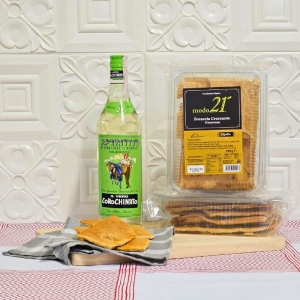Basanotto is a typical Ligurian liqueur because it is made with excellent local raw materials such as Savona chinotto (Slow Food presidium) and Genoese basil PDO. It is a young liqueur, which was introduced only a few years ago, in 2021, but which has already become a classic and has immediately become part of the local traditional imagination. Because even though Ligurian liqueurs made with local products already existed, one was missing that would bring together the main ones, the symbols known even outside the region.
What Basanotto is and how it is made
Basanotto is produced by macerating Genoese PDO basil, Savona chinotto, sage, lemon peel, mint and cane sugar in a mixture of mineral water from Fonte Bauda di Calizzano and organic wheat alcohol. These ingredients were all selected after careful research and nothing was left to chance: for example, importance was also given to the water - which comes from Fonte Bauda di Calizzano, one of the last remaining sources in Liguria - because the quality of the water makes all the difference in the success of a liqueur.
This has resulted in a bouquet of scents and flavours that recreate, perfectly and naturally, the essence of Ligurian aromatics between citrus and herbaceous. The gastronomic tradition of Liguria is historically characterised by the cultivation of citrus fruits and the harvesting of aromatic herbs: in the former case, especially in the western part of the region, the cultivation of oranges, citrons, lemons and chinottos was one of the first sources of income for the Republic of Genoa; and herbs (both wild and cultivated) were also the daily food of the population of the time, both as a basic ingredient and as a 'flavouring'.
How to drink Basanotto. Advice on how best to enjoy it
Basanotto can be served as a classic liqueur, straight with ice (either before or after dinner) but it is also ideal for making cocktails, using it as a base to reinvent your aperitifs. It is a very perfumed liqueur, whose precious and pleasant aromaticity is still intact on the palate, with an excellent taste-olfactory correspondence. To start getting to know it, you can also try it just mixed with prosecco or tonic, and then use it in more elaborate cocktails, for example:
![]() By buying this product you can collect up to
5
points
By buying this product you can collect up to
5
points

























